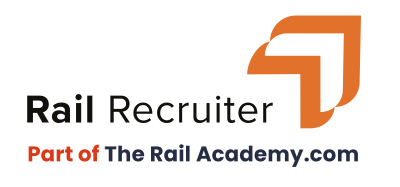Pin-pointing punctuality
Posted: 23 January 2020 | KeTech | No comments yet
Every second matters to passengers, but did you know quite how much? In 2018 passenger satisfaction dropped to a 12-year low, with one in seven trains falling short of the industry measure of punctuality. During this period the UK’s Office of Rail and Road (ORR) said “no-one took charge” during timetable chaos that caused severe disruption on Britain’s railways.


It is not unusual for trains to be delayed causing a domino effect on passenger’s lives, ultimately resulting in a poor relationship between passengers and train operating companies (TOCs). Transport Focus reported (2019) that only 44 per cent of passengers are satisfied with how TOCs deal with delays. This issue is reported to be a key driver for customer dissatisfaction. Research shows that passenger satisfaction regarding punctuality reduces as soon as a train is just one minute late. Leisure travellers are often more forgiving than work commuters as they do not experience interruptions daily. Passengers often receive conflicting information from different media sources regarding delays and disruption. This causes passenger irritation towards TOC’s poor performance and erodes their most basic trust in the industry. To maintain satisfaction, trains need to be reliable.
Customer experience is the dominant lens through which the railways are judged. However, constant negative contextual backdrop means that positive experiences are thought to be ‘lucky’ and often a vague memory, if at all. Travelling by train can be perceived as having many benefits, such as being one of the safest, fastest ways to travel and expected to be less stressful than navigating the M25 traffic on a good day! Transport Focus reports that punctuality and reliability are the most significant factors that determine passenger’s level of satisfaction with the journey. A step in the right direction was made on the 1 April 2019. The standards for punctuality in rail were tightened in an attempt to improve performance and passenger satisfaction. Performance measurements show that over the past year that more than a third of British rail services failed to reach stations on time. It seems the continuous delays, disruptions, staff shortages and increasing fares have taken their toll on passengers. The Office of Rail and Road (ORR) report that since 2008-2009 total delay hours have increased 22 per cent compared with only a 10 per cent increase in the number of trains running.
The rail industry began recording the on-time measure in 2017, but it only became the primary assessment in April 2019. This means that up to the minute train performance data will be used as the primary method for measuring punctuality. Compared to the previous punctuality measure, widely known as the Public Performance Measure (PPM), considers a train to be ‘on-time’ if it reaches its final destination within five minutes for short-distance and long-distance within 10 minutes. The new data will measure a train as ‘on-time’ if it is within 60 seconds at every stop, allowing passengers to get a more accurate picture of exactly how good their service is.
In December 2018 over 80 per cent of trains were classed as ‘on time’ in comparison, only 65 per cent were classed as on time in 2019. The new up to the minute regulations are a more transparent way of recording punctuality rather than masking the lack of it. The new figures reflect actual arrival times and appoint accountability, a step in the right direction if TOCs want to re-build passenger trust. More importantly the new punctuality measure records the arrival as ‘on-time’ at every station – rather than just its end destination. The industry funded website ‘My Train Journey’ website is giving power back to the passengers. Here all will be revealed regarding every train’s punctuality and reliability, a performance overview can also be viewed weekly, monthly and yearly. Passengers also have the ability to look up historic real time information in order to compare different trains performance.
Rail users are most frustrated with problems that they perceive to be within the control of the TOC. For example, logistical problems, overcrowding, strikes and engineering are all thought to be managed by the TOC, as oppose to weather and accidents. Up to the minute recordings will not only benefit the customers but the TOCs too. Recorded data will identify issues that cause delays so that TOCs focus energy into creating solutions. It seems the British railway is taking step towards a right time performance culture that co-ordinates with passenger expectations in order to improve experience and trust, however it will require all parts of the industry to work together to bring unrelenting focus to deliver reliable and punctual services.
Related organisations
KeTech Systems Limited (KeTech), Office of Rail and Road (ORR), Transport Focus






